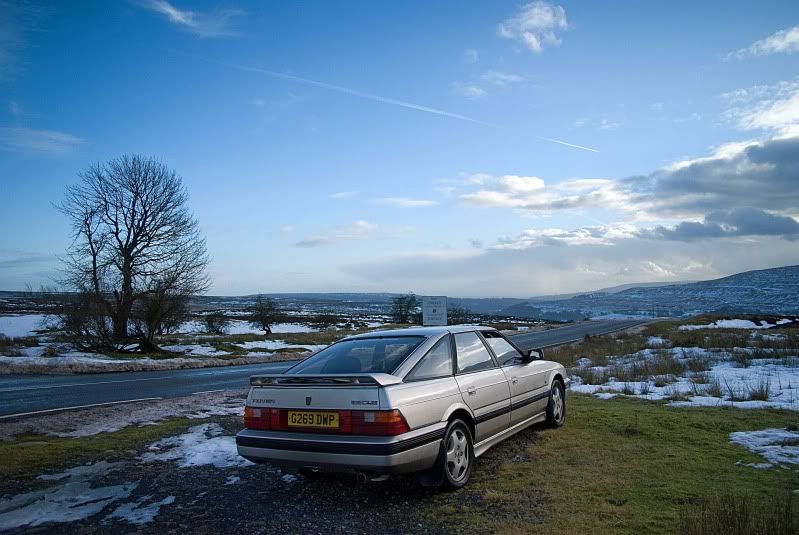 Oli's mega mile Rover - for next to nothing it's impossible to go wrong.
Oli's mega mile Rover - for next to nothing it's impossible to go wrong.Trying to navigate whilst speeding along a dual carriageway at something a tad illegal, I noticed too late the street we were aiming for. 'Bugger' was my response, to which my chauffeur braked hard, knocked it into second, and hurled the car round a 90 degree right turn across 2 lanes of traffic, tyres squealing like something from the Professionals. Such was my first experience of R404SPR back in August, from a rather cramped back seat.
I'll begin with an admission. I loathe the idea of a diesel engine. To me, they are clattery, sound like a Transit or a tractor, and tell everyone within sensory range that you're either a Scot or a Yorkshireman when it comes to counting the pennies. I've never heard the term dieselhead used to refer to a car nut, not is there a car satire site called SniffDiesel. So I didn't expect to be greatly impressed by the daily hack of my best mate, Oli South. The car is a Rover 420 SLDi he bought in June last year with 159000 miles for £350 or so, and now has done just shy of 190000 miles. In the time he's owned it it's not exactly been his pride and joy (That's his Maestro VP) - it's been a workhorse; driven daily, used for work, dented, scuffed, and with an interior that would give an OCD sufferer a multiple heart attack. However, I fancied a quick spin, and upon expressing this desire he chucked me the keys.
To begin with, at fairly moderate speeds it seems unnecessary to use the accelerator. The car will set off from a standstill and build to a decent town speed on the clutch alone - making this the first car I've driven that seems entirely impossible to stall unless the driver is being a prat. The seats were still supportive after thirteen years and 190000 miles, the steering light and without any free play that I could detect.
However, it was a tad light for my taste. I wasn't overly impressed with the ergonomics - I'm sure that by spending ages fiddling with the seat I could have got into a position where nothing was a huge stretch, but given that I didn't test the car on the public highway and that the position everything was at suits Oli and his fiancee, I didn't like adjusting the seat too much. My other major criticism was that rear visibility is limited due to the high bootline, narrow rear screen, and thick rear pillars - the light steering also meant that looking backwards whilst reversing, I had no idea in which direction the wheels were pointing until the car was moving.
Yet despite my dislike of diesel, the poor rear visibility, and the overly light steering, I can't honestly say it's a bad car. It was dirt cheap, has been driven the equivalent of three years' mileage unserviced since last June, and does not look or feel like a car that's travelled nearly a hundred and ninety thousand miles. Had I been looking for a car when R404SPR was for sale, I can't say that I'd have ignored it given the abuse it's taken and the stupidly low purchase price. As a daily hack, it's unbeatable.




